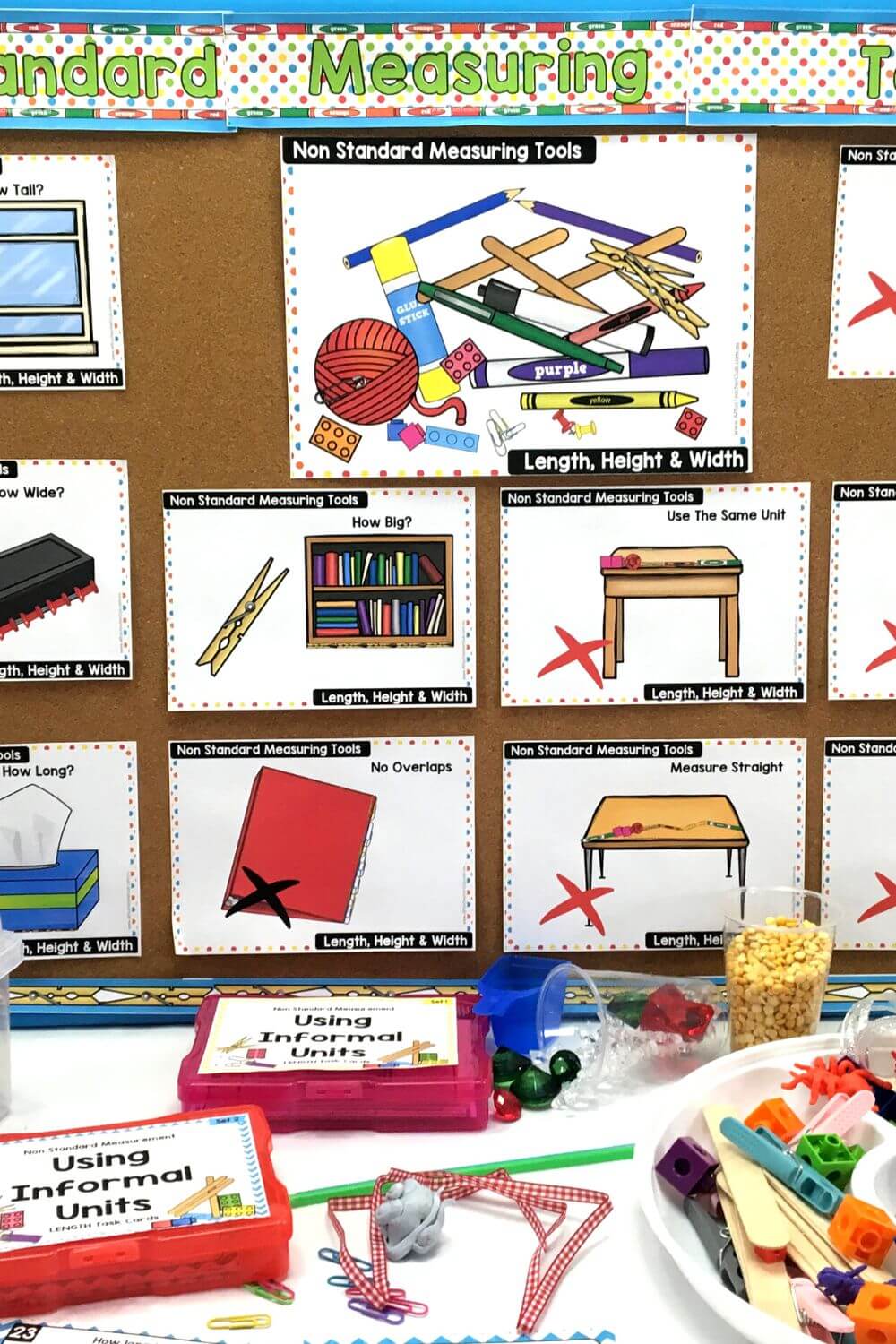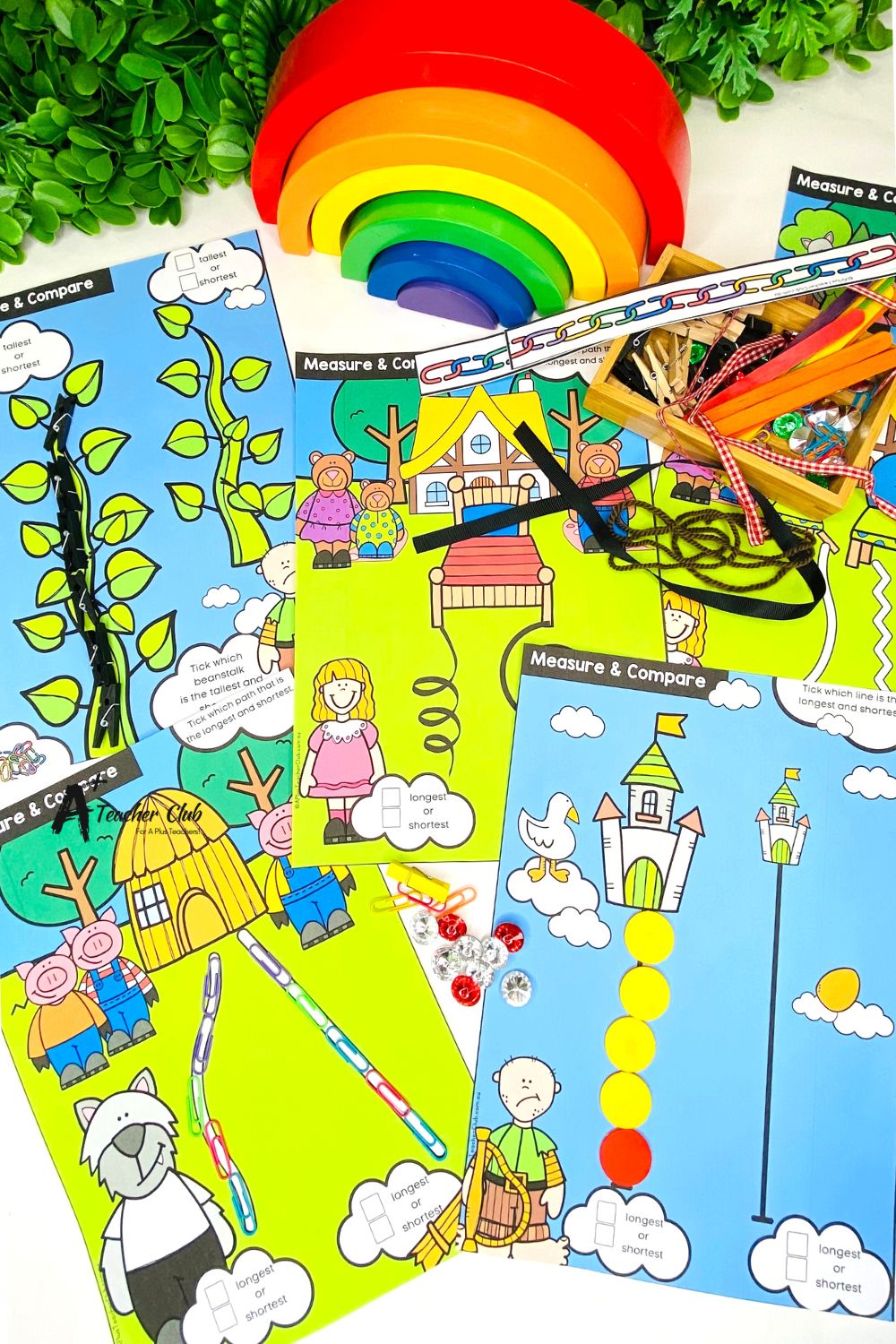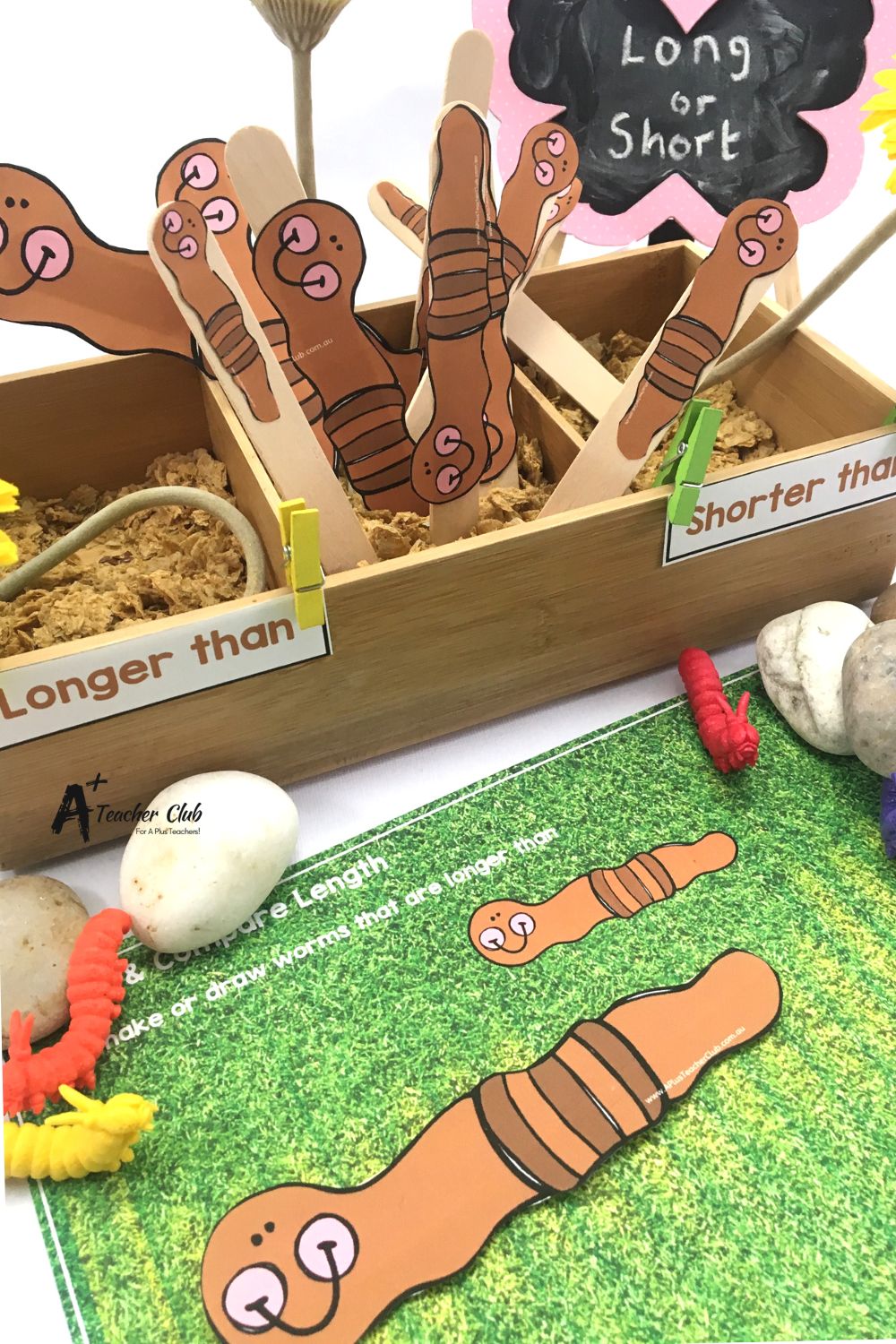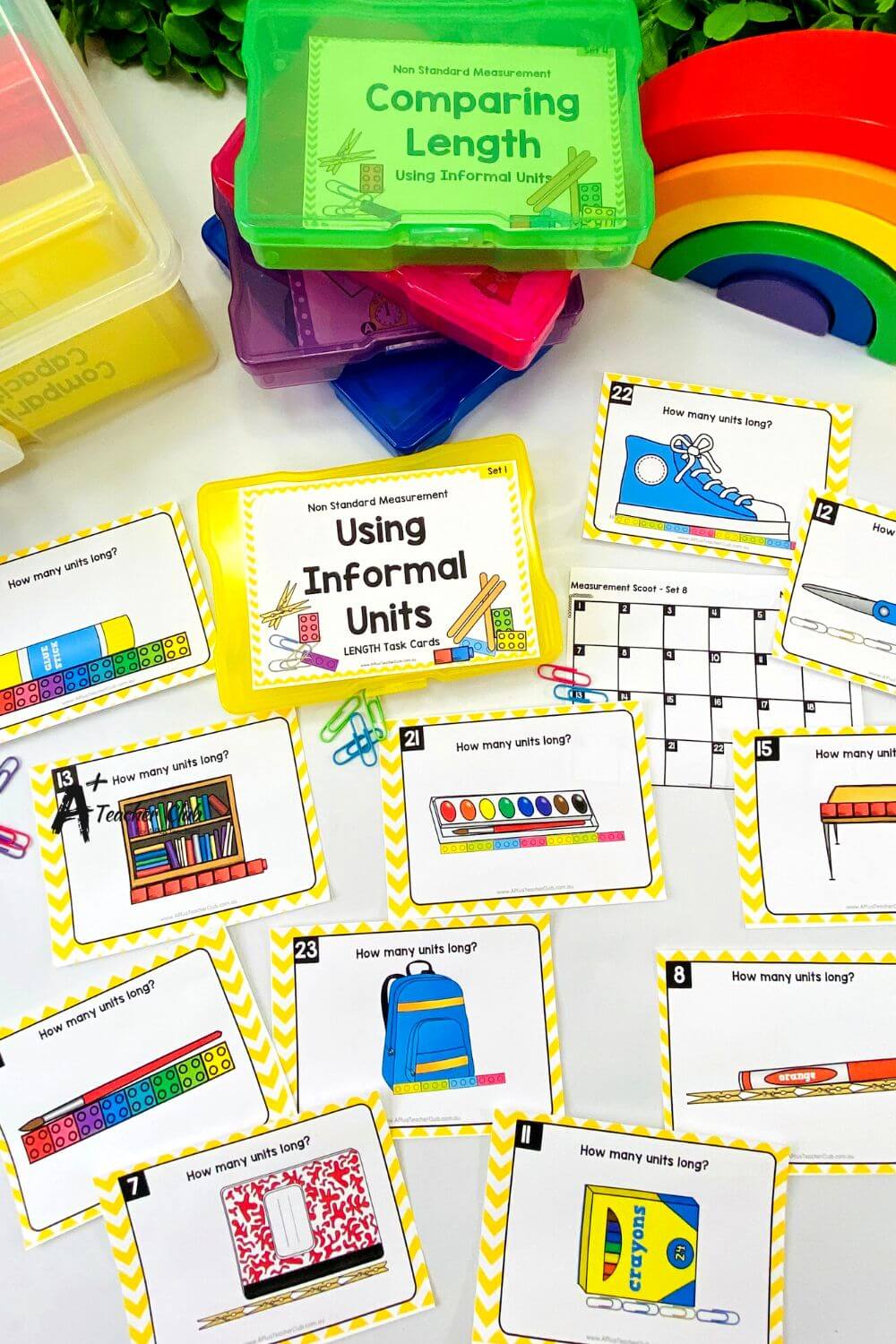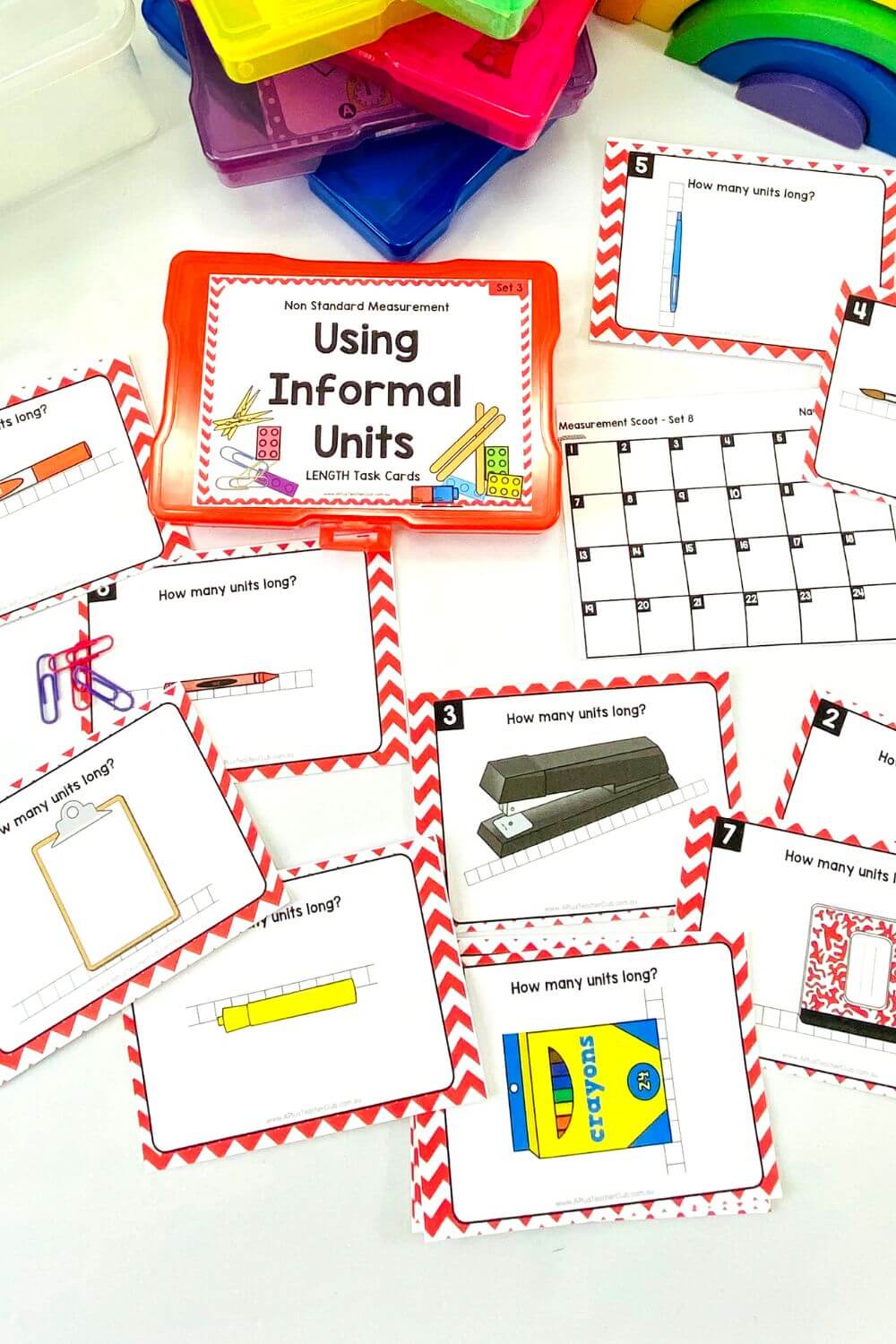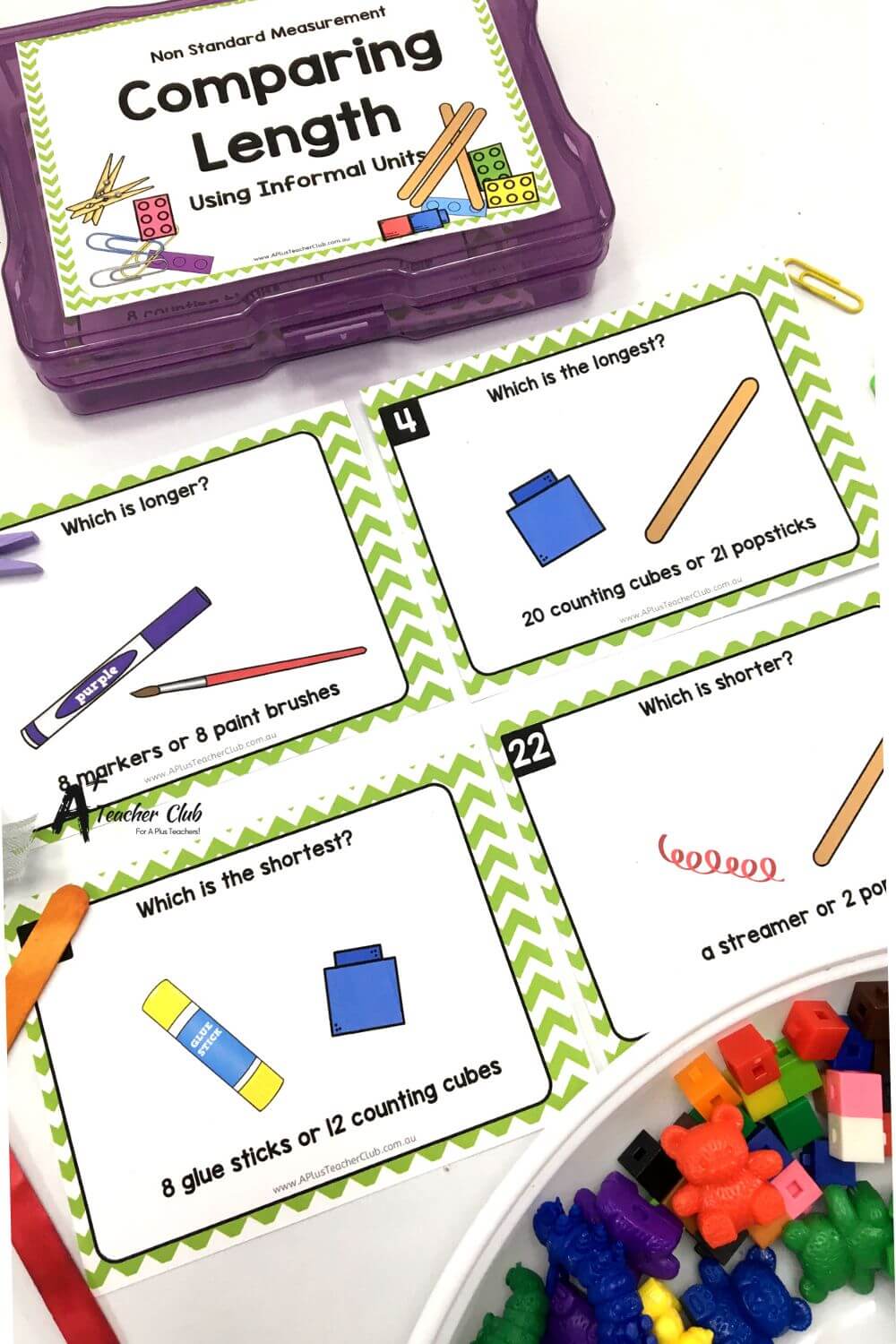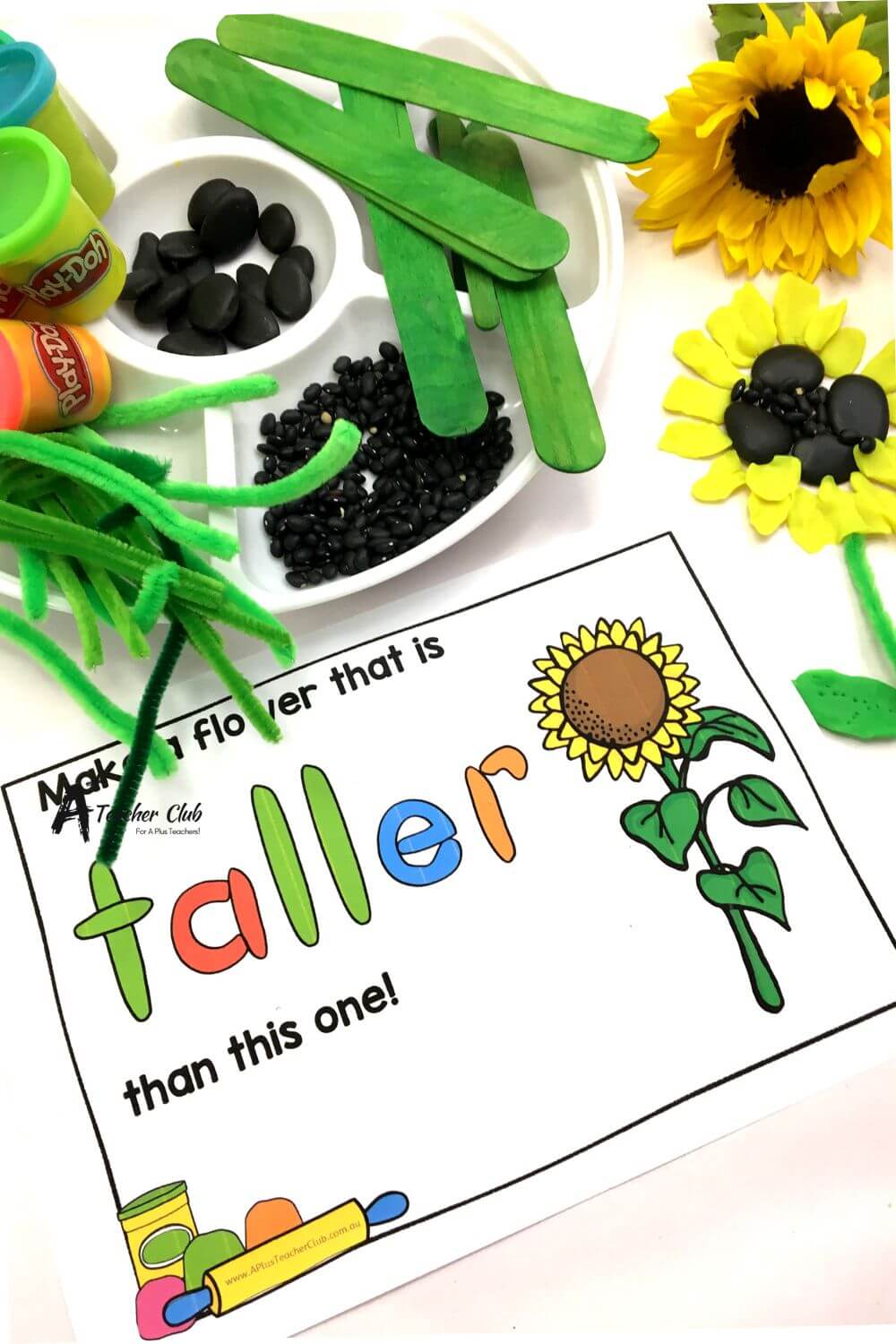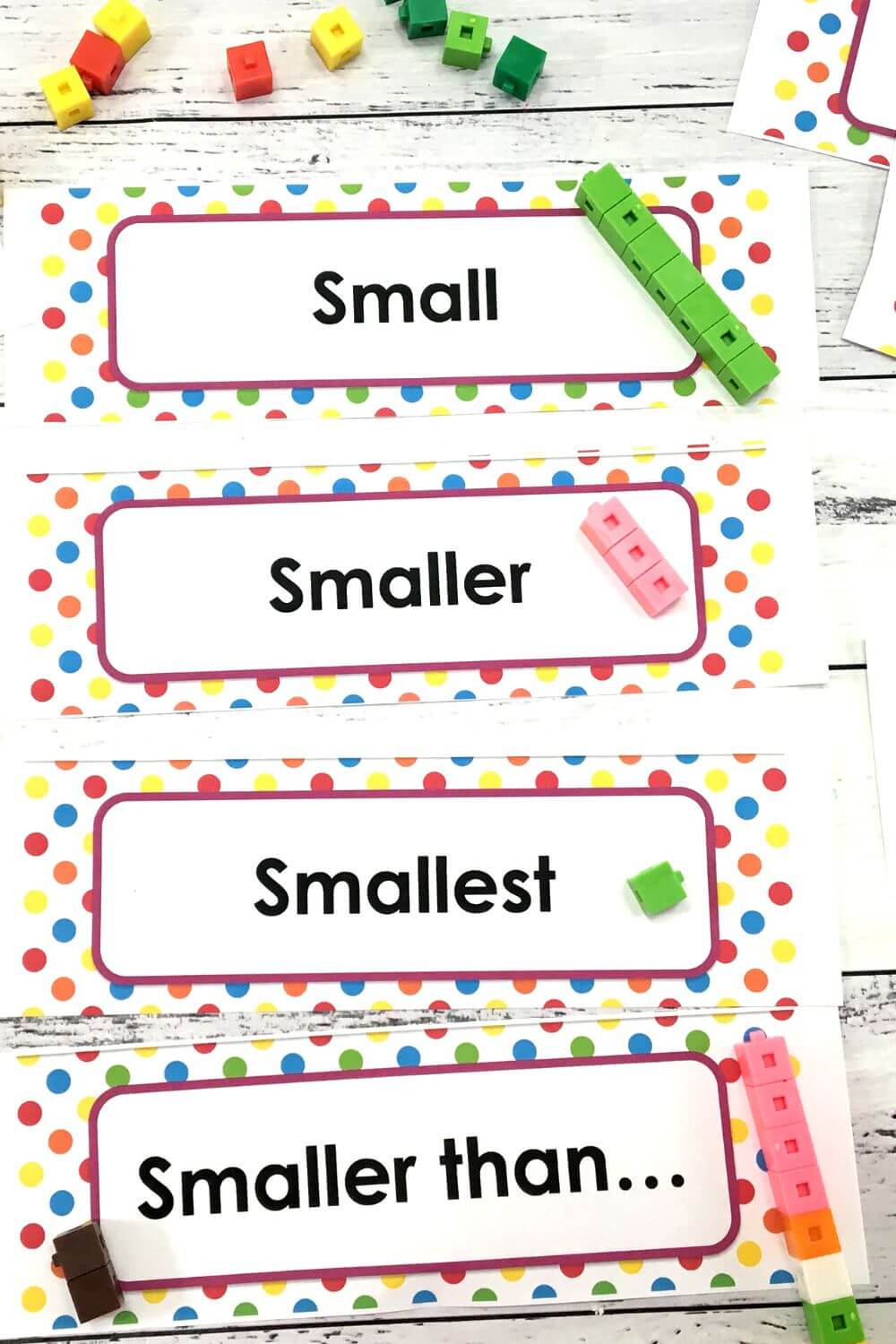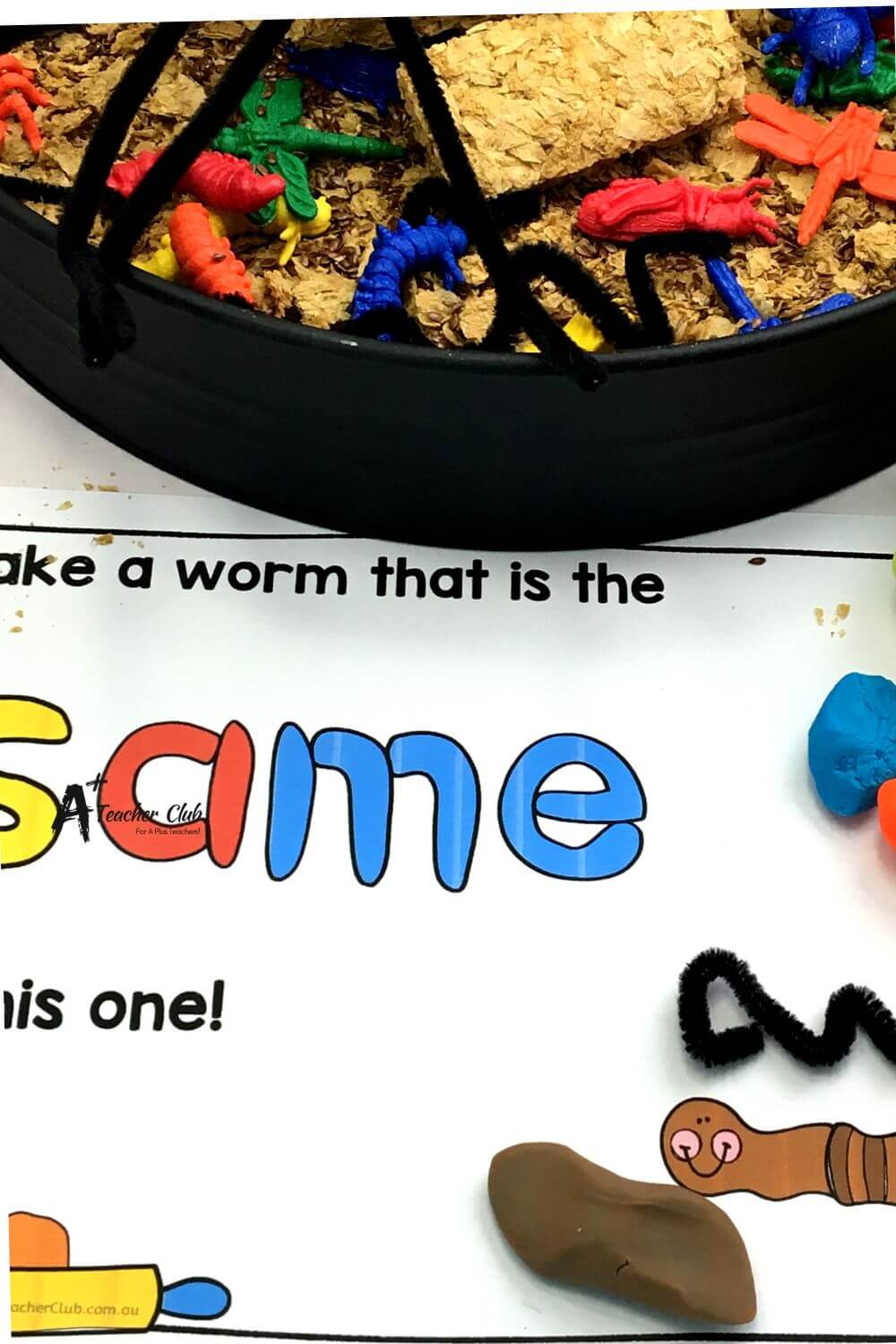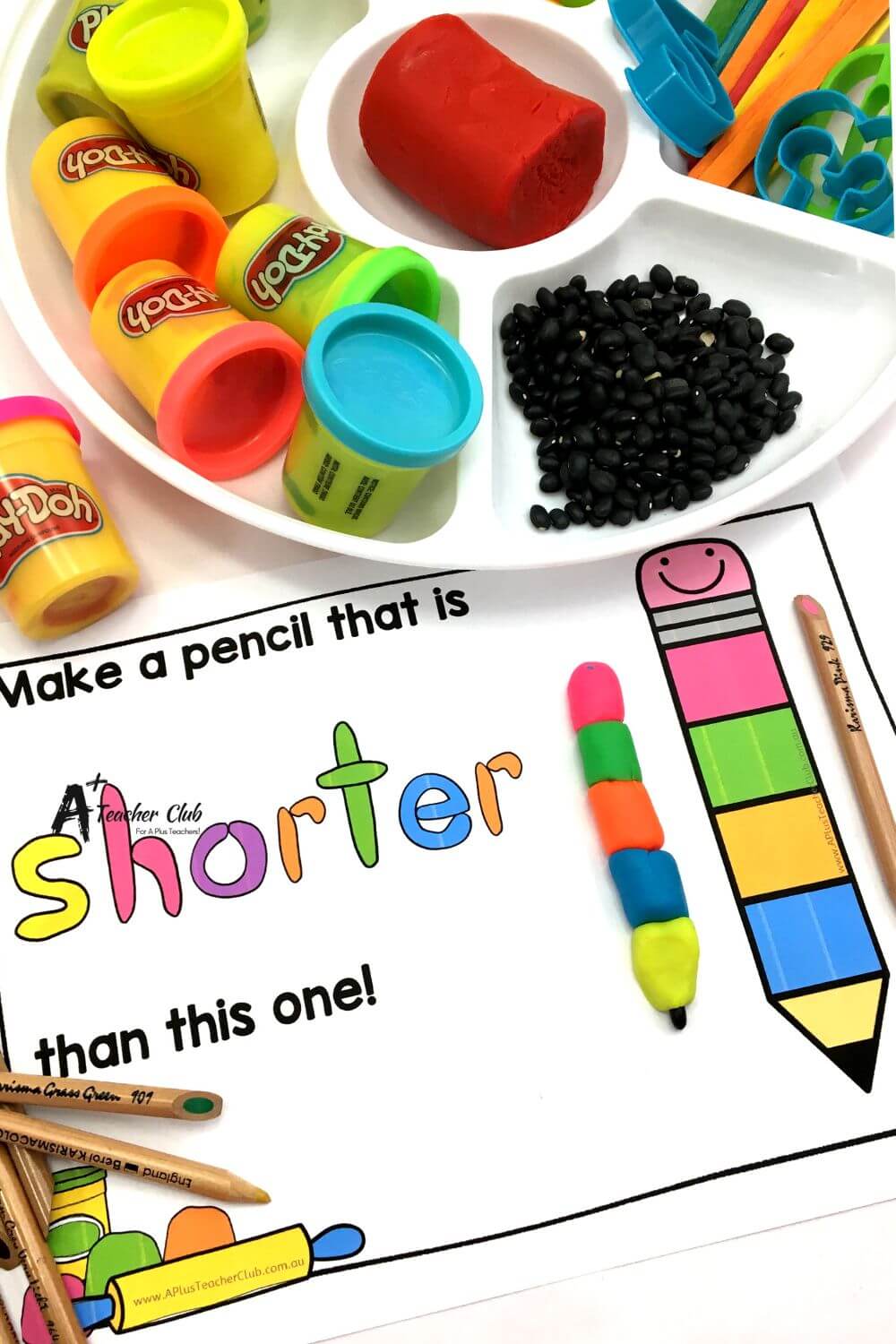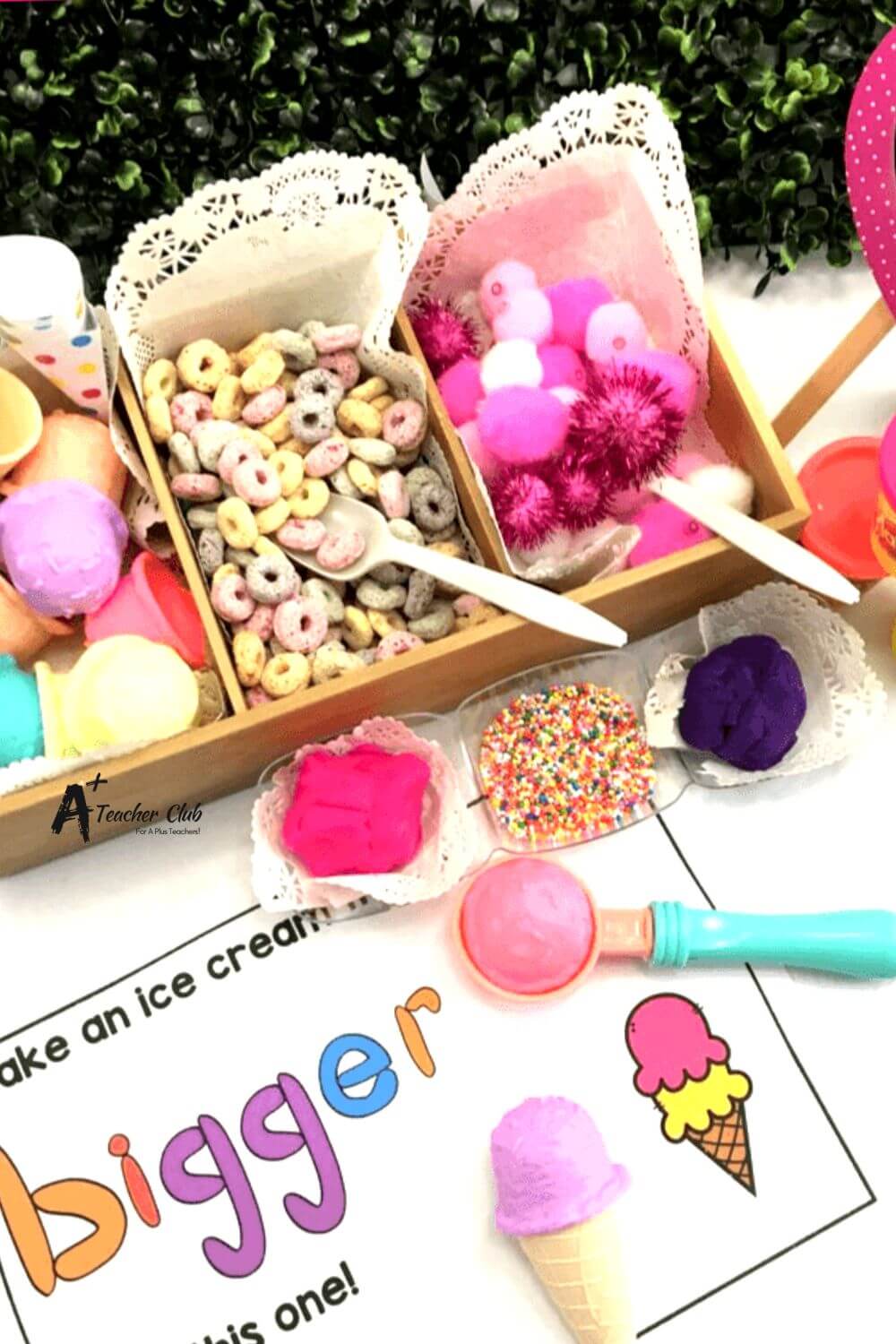Length Activities For Kindergarten
Units Of Measurement
Our Length Activities For Kindergarten, Pre Primary & EYFS Kids Teaching Resources will help build and explore EYFS measuring skills. Get some hands-on non-standard units of measurement lessons to make measuring length, mass and capacity a breeze!
Before kids are introduced to measuring length using formal measuring tools like rulers and tapes, they need to be taught the essential skills and steps of the measurement process, known as non-standard measurement.
Non-standard measuring is the foundation of all measurement concepts that Kindergarten and Pre-primary students need to be taught. Because this doesn’t involve reading a ruler, the students can focus on how measuring works and how to use units of measurement.
Read on to find out what you need to know about length and teaching Non-Standard Measurement For Kindergarten & Prep kids.
Teaching Length in Kindergarten & PrePrimary
To build a deep understanding of the measurement process and the skills needed to measure accurately kids need to practice measuring using informal non-standard units like pop sticks, paper clips and blocks.
So what is nonstandard measurement?
Non-standard measurement is using an informal unit to measure objects. It’s used by students in Foundation Stage, Kindergarten, Nursery, Reception and Year 1. The purpose of non-standard measurement is to focus the child on key measuring skills rather than reading tricky scaled instruments. Non-standard measurement skills included learning to:
- select the right tool to measure the object being measured
- select the same unit and not different units when measuring an object
- measure without gaps or overlaps
- start and end the measuring in the right spots
- measure it straight
- be precise
As students progress, they will encounter more difficult measurement concepts that build on these foundational skills.
These are universal skills that apply to all measurement concepts. In the context of teaching Length to Kindergarten and Prep Students teaching programs should focus on:
- using everyday language to compare 2-3 objects:
- long, longer, longer than, longest
- short, shorter, shorter than, shortest
- tall, taller, taller than, tallest
- Using direct comparison to compare objects. This involves placing two objects side by side, lining them up, to see which is longer.
- Using indirect comparison of two lengths – using a non-standard unit e.g. counters, cubes, paperclips, to decide which object is the longest or shortest
- Estimating – encourage students to estimate their answer before completing the task, then review their guess, discussing how to make a good estimation
Mastering these skills early on prepares students for more difficult measurement concepts in later grades.
Length Activities for Kindergarten
Developing measurement skills, especially understanding length, is a key focus for kindergarten students. At this stage, children learn to compare and measure objects using non-standard units such as unifix cubes, craft sticks, or even their own hands. Through engaging length activities, they practice identifying which objects are longer or shorter and begin to use descriptive language to explain their observations. These hands-on experiences not only build their confidence in early math concepts but also foster critical thinking and spatial awareness. Introducing fun and interactive length activities for kindergarten helps establish a strong foundation for future learning in measurement.
Below you will find a library of hands-on, play-based activities created for Kindergarten and Preprimary students measuring length using non-standard units.
Resources listed in this collection
Click to jump to...-
Non-Standard Units Display
-
Non-Standard Length Activities Compare 2 Fairytale Paths
-
Non-Standard Length Activities Measuring Mats - Worms
-
Non-Standard Length Activities How Many Units Task Cards
-
Non-Standard Length Activities Which Unit Task Cards
-
Non-Standard Length Activities How Many Squares Task Cards
-
Non-Standard Length Activities Measure & Compare Task Cards
-
Playdough Mat Template Measuring Length Sunflowers
-
Non Standard Length Words
-
Playdough Mat Template Measuring Length Worms
-
Playdough Mat Template Measuring Length Pencils
-
Playdough Mat Template Measuring Length Icecreams
Length Activities For Kindergarten, Pre Primary & EYFS Kids
Explore tags
More Measurement Activities
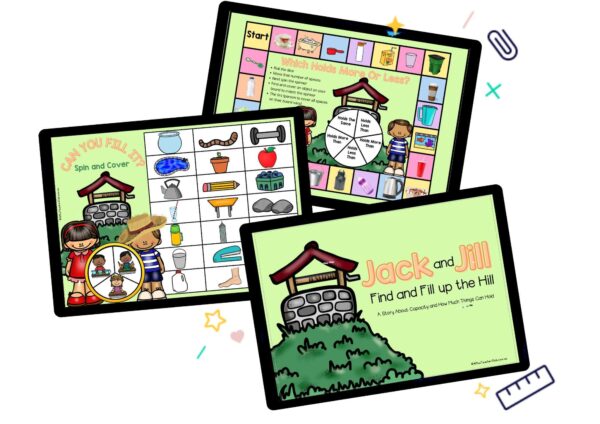
Non Standard Capacity - Jack & Jill
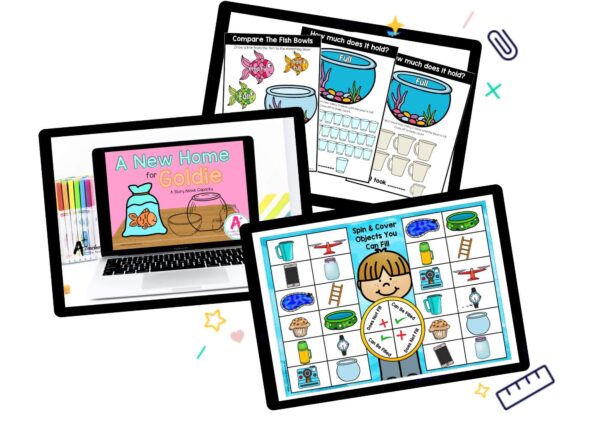
Capacity - K - PP
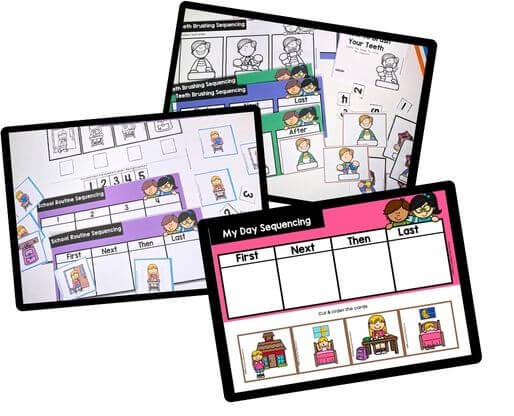
Time - 4 Step Sequencing
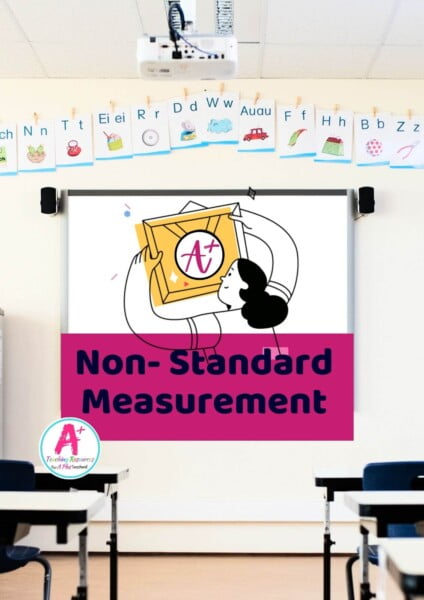
Year 1 Non-Standard Measurement

Time - Days of the Week
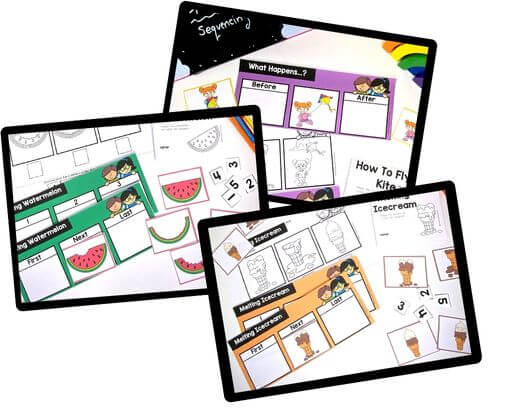
Time - 3 Step Sequencing

Area - Non-Standard
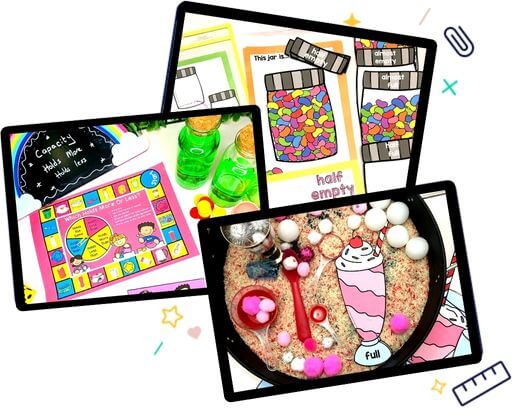
Capacity - Non-Standard
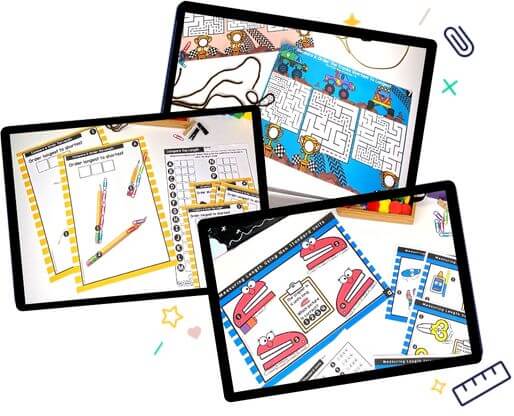
Length - Year 1

Mass - Non-Standard

Vocabulary - Measurement
Can't find what you're looking for?
Send us a request! Use this form to request a resource. Please give details of the learning area, topic, year level, curriculum links. We’ll be happy to take a look to see if we can fit it in. Unfortunately a request does not guarantee we will be able to make it!
"*" indicates required fields

